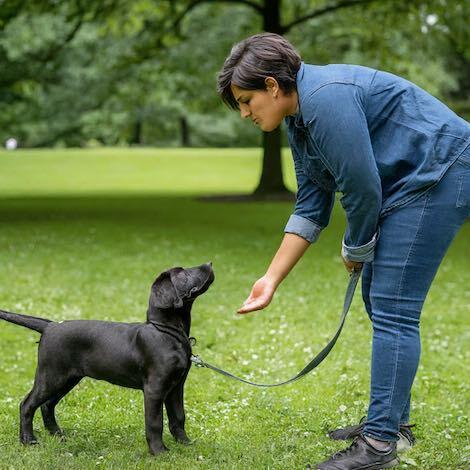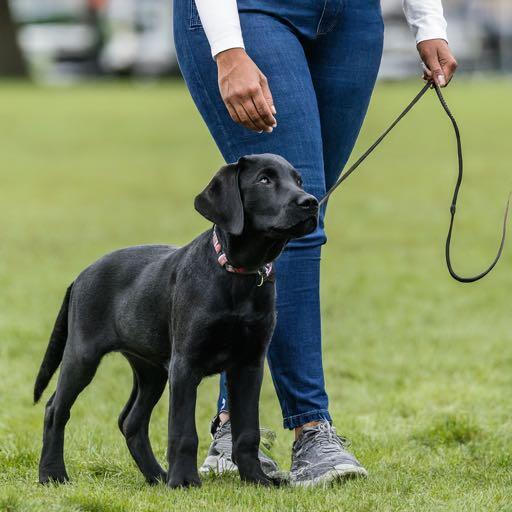Dog leash training should be a joyous experience for both of you. Yet, for many dog owners, leash pulling becomes a frustrating reality, turning walks into a tug-of-war battle. Leash training isn’t just about control; it’s about establishing a foundation for mutual respect and enjoyable outings. Let’s delve into the world of leash training, unveiling effective methods and valuable tips to transform your walks into happy adventures.
Dog Leash Training 101
Understanding the Root of the Problem:
Before embarking on training, it’s crucial to understand why your dog pulls. Common reasons include:
- Excitement: Dogs naturally want to explore and investigate their surroundings. Pulling allows them to get closer to things that pique their interest.
- Lack of direction: If your dog doesn’t understand where you want them to be, they may pull to explore on their own terms.
- Negative reinforcement: Jerking or pulling on the leash creates an unpleasant experience, leading to more pulling in the future.
Choosing the Right Tools:
The right equipment sets your dog up for success. Opt for a comfortable harness that distributes pressure evenly across their chest, preventing choking and discomfort. Avoid retractable leashes, as they offer little control and encourage pulling. Instead, use a standard 6-foot leash for training.
Building a Foundation:
Before venturing outdoors, practice basic obedience commands indoors. Reward your dog for focusing on you and walking loosely by your side. Use positive reinforcement methods like treats, praise, and playtime to keep them engaged and motivated.
The Power of Positive Reinforcement:
This is the cornerstone of successful leash training. Reward your dog for calm, loose-leash walking with treats, praise, or simply attention. Every time they walk by your side without pulling, mark the behavior with a “Yes!” or clicker and follow it with a reward. This teaches them that walking politely gets them good things.
The Stop-and-Go Technique:
This simple yet effective method works wonders. The moment your dog pulls, stop walking completely. Wait until they slacken the leash before starting again. This teaches them that pulling halts the walk, while loose-leash walking keeps it moving. Be patient and consistent, as this technique requires repetition.
Turning Around is Fair Play:
When your dog pulls, simply turn around and walk in the opposite direction. This unexpected change disrupts their pulling behavior and encourages them to follow you to continue the walk.
Exposure and Desensitization:
If your dog lunges or reacts to certain stimuli during walks, gradually expose them in controlled environments. Start at a distance and reward calm behavior. Slowly decrease the distance over time, using positive reinforcement to build confidence and reduce reactivity.
Making Walks Fun:
Don’t forget the fun factor! Incorporate short sniff breaks, playtime with engaging toys, and positive interactions with other dogs (with permission, of course!). This makes walks enjoyable for your dog, associating them with positive experiences.
Seeking Professional Help:
If you encounter challenges or feel overwhelmed, don’t hesitate to seek guidance from a qualified dog trainer. Their expertise and personalized approach can be invaluable in addressing specific issues and tailoring a training plan that suits your dog’s needs.
Remember:
- Patience and consistency are key. Leash training takes time and dedication. Be patient with your dog and remain consistent with your training methods.
- Small steps lead to big success. Celebrate even the smallest improvements and avoid getting discouraged by setbacks.
- Make it enjoyable for both of you. Keep training sessions positive and engaging, fostering a strong bond and a love for walks with your furry friend.
Leash training can transform your walks from frustrating struggles into enjoyable bonding experiences. By understanding your dog’s motivations, utilizing effective techniques, and prioritizing positive reinforcement, you can unlock a world of happy walks and a deeper connection with your canine companion. Remember, the journey is just as important as the destination. So, grab your leash, embrace the process, and get ready to create countless joyful memories with your beloved dog!
Additional Resources:
- American Kennel Club: https://www.akc.org/expert-advice/training/five-quick-tips-for-better-leash-walking-manners/
- Association of Professional Dog Trainers: https://apdt.com/
- The Karen Pryor Clicker Training Library: http://www.clickertraining.com/

